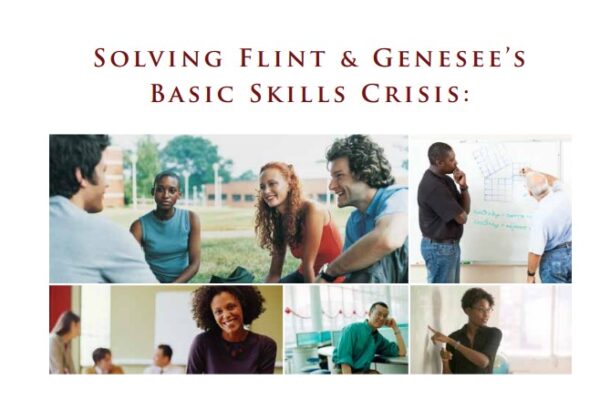Call for a National Conversation on Creating a Competency-Based Credentialing Ecosystem
CSW and the other signatories of the Call for a National Conversation on Creating a Competency-Based Credentialing Ecosystem believe that the time has come for large scale expansion of the use of credentials that recognize an individual’s competencies – regardless of means of acquisition – to improve employer competitiveness, reduce skill shortages, expand career advancement opportunities for workers, reduce time to credential for workers and students, and improve returns of accredited credentialing systems relative to costs…
Competency-Based Credentials Case Studies
Corporation for a Skilled Workforce (CSW) has embarked on a multi-year initiative to increase the quality and use of competency-based credentials. To lay a foundation for this work, we gathered information about a cross section of promising credentialing efforts. The case studies that appear in the report provide a glimpse of the variety of approaches being undertaken in different industries—by an array of different stakeholders— both in the U.S. and internationally…
Creating Pathways to Careers in Precision Machining For Opportunity Youth
Our working concept paper, Creating Pathways to Careers in Precision Machining For Opportunity Youth, explores why manufacturers are reporting a skilled worker shortage and how communities can create pathways for youth who are currently not enrolled in classes or working to take advantage of these career opportunities…
Career Navigation in a Volatile Labor Market
Our working concept paper, Career Navigation in a Volatile Labor Market, explores how organizations and communities can build better infrastructures to support workers as they navigate education opportunities…

Making a Market for Competency-Based Credentials
Our new report, Making a Market for Competency-Based Credentials, is aimed at articulating a foundation for our collective work by analyzing the credentialing landscape, identifying promising credentialing approaches, and assessing what is needed to create a clear and compelling credentials marketplace…

Solving Flint & Genesee’s Basic Skills Crisis
CSW has been working with a network of Flint area stakeholders who are interested in making a difference in the enormous basic skills gaps that are present in their community…
Perspectives on No Worker Left Behind
Transitioning Michigan workers who went back to school with support from the state’s No Worker Left Behind initiative found their training valuable in finding and performing new jobs. This and other No Worker Left Behind participant reflections are detailed in this report, based on survey responses from 4,231 participants in No Worker Left Behind.
Reinventing One-Stop Career Centers Version 2
In our latest concept paper, we propose reinventing and transforming One-Stop Career Centers into places that engage employers willing to invest in upskilling the workforce support workers willing to engage in a combination of work and learning to gain market-relevant skills and credentials to achieve good paying jobs with career potential…
Apples to Apples: Making Data Work for Community-Based Workforce Development Programs 2013
The Benchmarking Project launched in 2004 to understand what “good” performance looks like for different types of workforce development programs. The aggregate data from 332 programs in 200 organizations – mostly CBOs – represent the largest collection of outcomes information to date for programs serving America’s disadvantaged job seekers…
Asset Development: A Framework to Align Economic Development, the Safety Net, and Education in Arizona
Arizona seeks to align its economic development, safety net, and education systems to benefit both its citizens and its economy. The systems would do well to align themselves around an asset development framework. Assets reduce the risk of poverty and reliance on the safety-net. Assets can break generational poverty. Assets enable people to start businesses. Assets enable people to invest in education. Education improves productivity and the economy. This paper explains that self-sufficient families are still vulnerable and have not reached their maximum capacity if they continue to be asset-poor.
State Sector Strategies Coming of Age
NGA and CSW further developed our sector strategy thinking in co-writing and releasing a report in early 2013. This report offers a snapshot of sector strategies today, an overview of what makes them different from traditional workforce and economic development programs, and a description of actions that state administrators and policymakers can take as part of a policy framework to support the strategies’ creation and effective operation. The report explores the opportunity for state and local policymakers to use sector strategies to integrate other potentially powerful industry-focused strategies, particularly career pathway programs and regional industry clusters. It is here that sector strategies present a tangible way to integrate the state’s talent agenda with the goals of economic competitiveness.
Developing Market-Relevant Curricula and Credentials: Employer Engagement for Community Colleges in Partnerships
Community Colleges are recognizing the importance of more deeply engaging their business partners. How can colleges more deeply engage employers as strategic partners? Engagement is more than attending annual business advisory committee meetings or providing input regarding curriculum…

